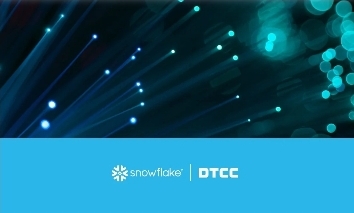When Disruptions Strike: Why Resilience in Data Platforms Matters for CX
You never know when disaster will strike your business. It could be a natural event like a hurricane or an unexpected cloud service outage. One moment, your team is running smooth operations; the next, crucial analytics and AI-powered customer systems go offline.
For professionals focused on customer experience (CX) and employee experience (EX), the stakes are high. Every minute of downtime risks lost revenue, missed opportunities, and frustrated customers. The imperative is clear: ensure business continuity, especially for data-driven CX and EX initiatives.
But how can organizations prepare for such unpredictable disruptions in today’s hyper-connected, cloud-dependent world?
Understanding the Challenge of Resilience in CX and EX
Modern CX and EX rely heavily on data analytics and AI to personalize experiences, anticipate customer needs, and optimize workforce efficiency. When data platforms falter, the ripple effects can be devastating:
- Customer-facing applications slow or fail, harming satisfaction and loyalty
- Delayed business intelligence compromises timely decision-making
- Employee productivity drops as internal tools become unavailable
This makes resilience and disaster recovery non-negotiable components of any CX/EX technology strategy.
Sridhar Ramaswamy, CEO of Snowflake, puts it bluntly: “Having single points of failure is a business decision and often an avoidable one.” His company’s AI Data Cloud aims to eliminate downtime as a variable in customer experience management.
Snowflake’s Disaster Recovery: A Deep Dive
Snowflake’s approach to disaster recovery directly addresses these business continuity challenges. Let’s explore the critical elements of their strategy:
Cross-Cloud and Cross-Region Replication
Snowflake’s Snowgrid technology enables replication of data and account-level objects (users, roles, integrations) across multiple cloud providers and geographic regions. This redundancy ensures that in the event of a disaster affecting one region or cloud provider, business operations can continue uninterrupted via a failover region.
For example, DTCC, a systemically important financial institution, relies on Snowflake’s regional replication and failover capabilities to achieve near-zero recovery time objectives (RTO) and close to zero data loss.
Failover Groups for Point-in-Time Consistency
Failover groups ensure all production databases within an organization are restored to the exact same moment during failover. This is vital to avoid data mismatches that could disrupt customer transactions or internal analytics.
Client Redirect for Seamless Cutover
Snowflake uses Client Redirect technology to provide a single, region-agnostic connection endpoint. Applications automatically reroute to the failover region without requiring any code changes, minimizing disruption to both users and employees.
Centralized Governance and Real-Time Monitoring
Security policies, governance protocols, and replication status remain synchronized and visible across all environments. This centralized control helps CX and EX teams maintain compliance and respond swiftly to issues.
Expert Insight: Why Disaster Recovery Shapes CX Success
Erik Duffield, CEO of Snowflake partner Hakkoda, highlights in an interview how data sharing and AI enhance continuity of care in healthcare and modernize supply chains by ensuring uninterrupted, intelligent information flow [4]. He underscores that resilient data platforms deliver not only revenue growth but also cost savings and customer experience improvements.
Sridhar Ramaswamy himself emphasizes that AI and data connectivity will reshape entire industries by enabling companies to act on clean and connected data rather than isolated silos. This transformation can’t happen without bulletproof data resilience.
Case Study: DTCC’s Rock-Solid Resiliency with Snowflake
The Depository Trust & Clearing Corporation (DTCC) handles trillions of dollars in securities transactions daily. Business continuity is fundamental for their operation.
DTCC’s use of Snowflake’s Snowgrid technology showcases practical benefits:
- Over 700,000 daily queries processed across 15 applications without downtime
- Near-zero data loss and rapid failover during over 15 live disaster recovery exercises
- Ability to segregate disaster recovery by application, simplifying operational complexity
Their success illustrates how disaster recovery directly supports uninterrupted customer and market services, sustaining trust and operational excellence.

Practical Takeaways for CX/EX Professionals
- Prioritize Data Platform Resilience: Evaluate your analytics and AI infrastructure for cross-region and cross-cloud failover capabilities. Snowflake’s approach offers a blueprint for resilient CX systems.
- Define Clear Recovery Objectives: Set recovery point objectives (RPO) and recovery time objectives (RTO) based on business impact to align disaster recovery investments with customer experience priorities.
- Simulate and Test Regularly: Conduct scheduled disaster recovery drills to validate readiness and refine failover procedures, just as DTCC does. Real exercises expose hidden risks before real incidents.
- Promote Seamless User Experience: Use technologies like client redirect to reduce friction during failover, ensuring customers and employees remain unaware of disruptions.
- Centralize Governance and Monitoring: Maintain synchronized policies and real-time insights across environments to safeguard CX and comply with regulations.
Conclusion: Resilient Data Platforms Enable Great CX
In the fast-paced digital economy, downtime isn’t a matter of “if” but “when.” Snowflake’s disaster recovery innovations demonstrate how cloud data platforms can transform these inevitable disruptions into non-events.
For CX and EX professionals, building resilience into your data architecture is no longer optional. It directly translates into reliable experiences, operational agility, and competitive advantage.
As Sridhar Ramaswamy states: “The organizations that successfully weather disruptions aren’t lucky; they’re prepared”.
If your CX strategy depends on uninterrupted data and AI services, it’s time to take disaster recovery off the back burner and make it a cornerstone of your customer and employee experience success.

